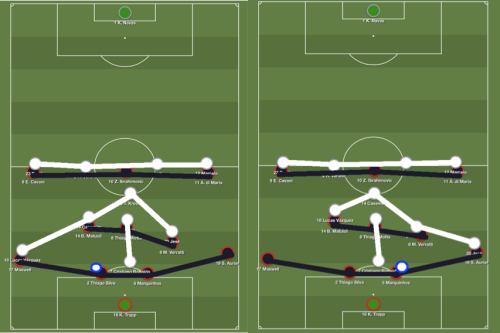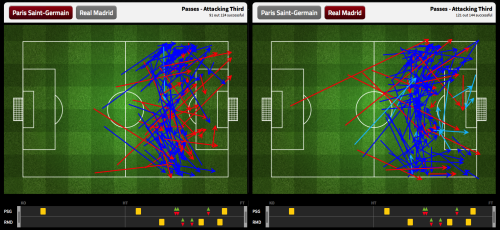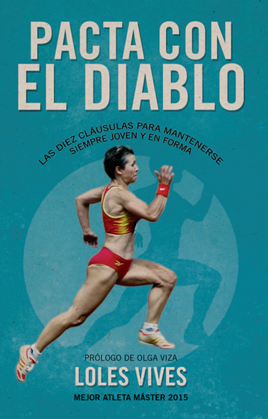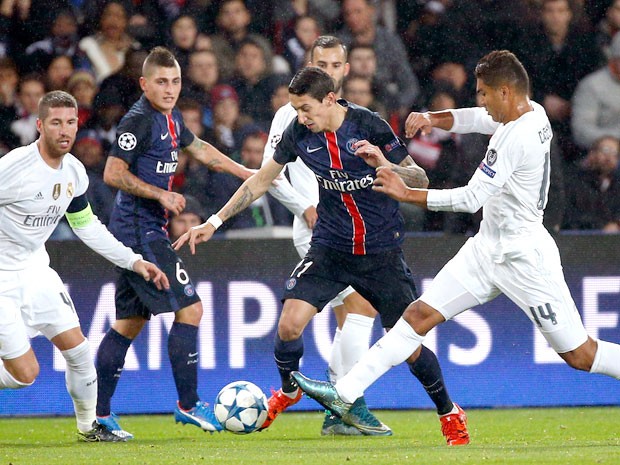PSG-R. Madrid in review: Real in control
Despite missing 6 players from their regular XI, Real Madrid brought a confortable draw, and a clean sheet from Parc des Princes. Benitez’ men didn’t concede one clear chance to their opponents, thanks to an efficient defensive game plan: A huge pressure in opposite side, but a calculated risk, pushing on some special PSG’s offensive limits.
Madrid’s press: a high and (laterally) compact bloc
Madridistas created one of the biggest chances of the game, after only 2 minutes. An intense pressing sequence, ended by a vertical attack, witch allowed reading Rafa’s plan in PSG’s side. The forwards’ job (Ronaldo and Isco) was to disturb Paris’ first pass around Thiago Silva, Thiago Motta and Marquinhos. After this first line, the 4 midfielders behave like this, according to the side (left or right) of the ball:
- The winger was pressing the wingback
- The central midfielder was pressing his opponent, (Kroos pressing Verratti, or Casemiro pressing Matuidi, according to the side of the ball)
- The opposite winger was marking the opposite central midfielder (Vasquez on Matuidi, is the ball is in Verratti’s feet for example).
- Opposite (Madrid) central midfielder was covering his team-mate against Ibrahimovic (this schema escalated with Casemiro covering Kroos).

Madrid’s pressing shape, according to the side of the ball: the block is high, and compact laterally, in order to disrupt the “play-out-from-the-back” habit of PSG
Thanks to this aggressive game plan, Madridistas took a mental edge, won the territorial battle, and threatened PSG with their counter attack ability from the first moments of the game.

Territorial domination of Madrid: 30 passes more in the last third than their hosts of the night, despite only 42% ball possession.
On the second sequence of the video below, we can see that PSG’s wingback are quickly forced into a perilous one touch play, although Matuidi’s poor technique is finally punished by Casemiro, leading to a logic early yellow card for the French man.
Madrid’s Step back: in control in their own side, thanks to numerical superiority
This pressing shape was ambitious, but the risk was manageable: Benitez applied pressure on a (theoretical) weak point off PSG’s 4-3-3: the central midfielders duo:
- Verratti (despite his huge finesse and talent) has only little influence in the last 1/3 of the pitch.
- Matuidi (despite his activity and generosity) is at the same time useless (or even dangerous) in the process of getting the ball out from the back by his poor technique, as his vertical runs are sort of “controllable” for the same reason.
By applying a rigorous and aggressive man marking – very high on the pitch – by Verratti on Kroos and Casemiro on Matuidi (according to the flank the ball was on), Benitez knew that even if this pressing was “broken” by PSG’s talent at the back, Madrid would have time to step back. For this reason, he positioned a very high defensive line, also knowing that Blanc could only count on one significant vertical threat: Edinson Cavani.
Ibra’s profile and physical form, as the fact that Di Maria is a strict left footed player, made PSG quick attacks very easy to read for Madrid. The numerical superiority gave them even more control: With the Swedish man as a false 9, and Di Maria very predictable drifting back inside, Aurier and Cavani were the only 2 players providing vertical runs. Against a back4 of top physical level, Madridistas were also in total control in their own side.
This numerical superiority also allowed them to play a comfortable offside trap (7 offside to zero for Madrid), considering the fact that no “4th forward” (neither Verratti or Matuidi) was able to offer a diagonal run, or produce a numerical equality, for the reasons mentioned above.
Madrid in control / A reconsideration of PSG’s 4-3-3 ?
Drawing 0-0 at home against one the 2 best teams in Europe is surely not a catastrophe. But, considering all the players missing, and how important first place is, PSG are relatively standing with their back against the wall before going to Bernabéu on Tuesday night. Benitez clearly took over Blanc in the first part of their tactical opposition. The way his team annihilated PSG’ offensive game plan indicates a perfect pre-match analysis of the opposition.
If the second leg confirms the trend of the first game, PSG might have to reconsider some certitude. The 4-3-3 system shown a lot of offensive limits, notably in the last third of the pitch. PSG’s technical finesse at the back (Silva, Motta, Verratti, Maxwell) is often a reasonable element to break the opposition’s pressing (if any exists) against weaker opposition, but the pressing Casemiro applied on Matuidi is an overwhelming sequence about how weak the French man help is to getting the ball properly from the back. Witch is the model of play PSG try to emulate.
He didn’t start against St Etienne on Sunday, and Adrien Rabiot produced a satisfactory performance, notably on a technical point of view, being involved on Layvin Kurzawa’s opening goal. How long will Blanc be able to guarantee him an untouchable status with Pastore and Di Maria could also play in this role? Former Benfica player was very predictable as a right-winger, and everybody can remind he was a brilliant central midfielder when Madrid won La Decima in 2014.
If Madrid also enjoyed such a control, it’s also because PSG didn’t have the “4thattacker” Ancelotti’s 4-4-2 offered them in 2013. At this time, Cavani wasn’t there yet to finish sequences, as the Uruguayan suffers, and struggles to express let his fox-in-the-box ability in this left-winger role.
* Victor Lefaucheux.


BUSCADOR DE CATEGORÍAS
BUSCADOR POR MES
ÚLTIMOS TWEETS
Tweets por @martiperarnauSÍGUENOS EN FACEBOOK







